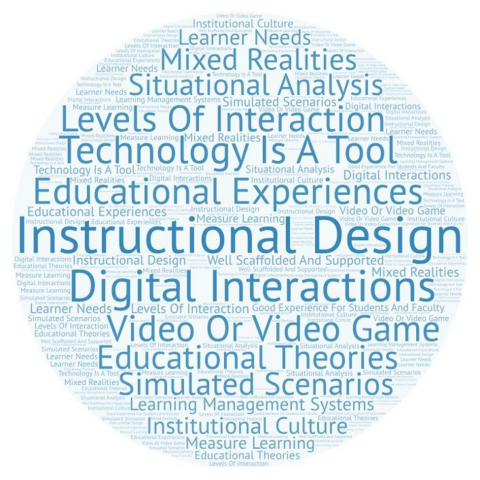If you have not yet worked with an instructional designer, it may be worth exploring such a resource at your institution to leverage your teaching with the help of relevant technology to enhance the educational experience. With remarkable advancements in educational technologies over the last decade, most, if not all, educational interactions taking place today incorporate some form of digital interaction for students, staff and faculty. As of fall 2016, there were over 6.3 million students taking at least one distance education course, comprising 31.6% of all higher education enrollments. And specifically in nursing education, 82.9 percent of nursing students report that the use of technology enhances their learning, and 79.6 percent say that technology helps them better prepare for future careers. These technologies appear in many forms during the educational career of a health care professional - whether it is the use of a learning management system (LMS), creating and interacting with video tutorials, participating in simulated scenarios, using different assessment tools, participating in peer evaluations …and the list goes on. Gaming tools and mixed reality applications are not far behind! As indicated by the recent 2019 Horizon Report, “mixed reality and artificial intelligence are forecast to be important to teaching, learning and creative inquiry in the future.”
Ideally, these digital interactions are planned and the selection of tools is synchronized across the institution. Yet, we often encounter gaps in communication and understanding of these tools and options among staff, students and faculty. This is where instructional designers can act as a bridge between faculty and the technological solutions available, by facilitating communication and providing user training. As highlighted by Robin et al. “The effective use of technology requires support from a variety of experts in instructional design and educational technology, and thus a variety of resources are needed.” Instructional designers can help to identify which approaches and which tools could help to address a desired curricular outcome. They can also help faculty think through the various freeware options and the enterprise solutions already deployed on their campus.
Based on a situational analysis, a concept well explained by Dee Fink, instructional designers can suggest relevant options for faculty to consider. Instructional design teams are usually well versed in commonly used tools, proficient in using them to a certain degree, and discuss them regularly with relevant stakeholders across campus.
Pedagogically, an instructional designer is someone who can situate the educational interaction in the context of the discipline, the overall curriculum and the course itself. A recent study noted that 93 percent of faculty enjoyed working with instructional designers and 37 percent had a very positive experience. 70 percent felt that it improved the quality of their courses and allowed them to actually use available educational technologies in their classes.
Having a macro view is vital to the instructional designer’s ability to plan a series of good mini interactions that will cumulatively amount to a positive educational experience for the student and the faculty, while also balancing the administrative imperatives, and the resource constraints that must be acknowledged. Instructional designers are trained in educational theory and they keep abreast with contemporary literature and trends in teaching and learning. While an instructional designer is not usually a content expert, they are a vital collaborator and can engage with faculty to create captivating educational experiences.
A skilled instructional designer does what our technological tools cannot yet do: understand the institutional culture, identify learners’ needs, observe faculty’s teaching preferences, craft an approach that best suits desired outcomes and suggests tools as well as resources to achieve these outcomes. Some instructional designers have experience in teaching, which is an added asset. It enables them to empathize with faculty roles and understand how important it is to engage learners, follow curricular guidelines, meet standardized testing requirements and yet make learning and teaching a good experience for all those who are involved in the educational enterprise.

There are an estimated 13,000 instructional designers on U.S. college campuses. Instructional Design support can come in the form of an individual dedicated to one department or a consultant from the educational or information technology departments at your institution. Hopefully the ideas and the word cloud above encourage you to have a cup of coffee with your instructional designer!
Did you know that the Harvard Macy Institute Community Blog has had more than 155 posts? Previous blog posts have explored topics including worldwide innovations in healthcare delivery, supporting students and faculty through the application of learning sciences, and building an emergency department from scratch.
Manisha Mittal
Manisha Mittal, MEd, MA (2.0, ‘15), is an Instructional Designer at the UNC Chapel Hill School of Nursing. Manisha’s areas of professional interest include instructional design, blended learning and the relevant use of digital tools to achieve desired outcomes. Manisha can be followed on LinkedIn or reached via email.

